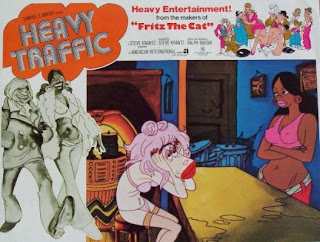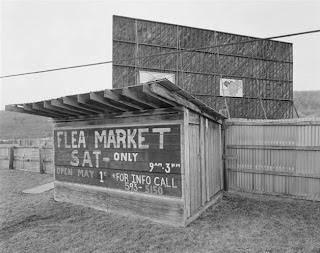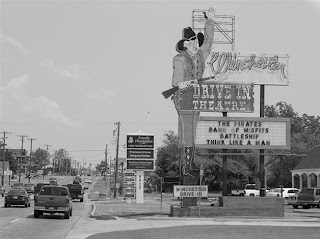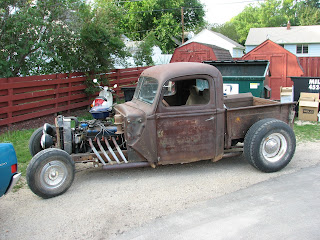From Love Affair to Troubled Marriage: 1973 and the American
Automobile Industry
For the American automobile industry, the seventies have never ended. Intense
foreign competition, high fuel prices, federal government regulation concerning
safety and the environment, quality and reliability, potential power train
transitions, and disaffected consumers all surfaced during the early 1970s and
really never went away. Yet, scholars focusing on automobile history have
utterly neglected the decade, beyond the pursuit of a few preliminary studies.
Perhaps the oversight is because these years followed the glorious 1950s
and 60s. Perhaps, it is overlooked as a consequence of the cars of the decade
often being considered by enthusiasts as being from the post-1972 "Malaise
Era." After all, you can count on your fingers the cars of the decade
worth thinking about. On a far broader scope than that of auto history,
Andreas Killen has argued that the seventies continue as "the foundling of
recent American history, claimed by no one."
Nevertheless, this period in terms of both automobile history and global
history, contains all the ingredients of revolutionary and enduring change.
Furthermore, the decade of the 1970s may be also viewed from the
perspective of American manufacturers as a time of missed opportunities. It was
an era characterized by the loss of product quality and Detroit Three market
shares due to the emergence of a rapidly changing global economy. On the
street, Americans experienced the appearance of cars equipped with ugly bumpers
and poor running engines. Additionally, a significant shift took place in the
balance of power between the federal government as a countervailing force
restraining a once unregulated industry. As one contemporary auto
industry commentator exclaimed, "Washington's hand was stretching out,
sometimes fist-like." Ultimately after years of foot-dragging and denial, Detroit
buckled to political pressures, and cars were never the same. , by the late
fall of 1973 Americans experienced Oil Shock I. Clearly, a historical
break took place that even the most detached from American society experienced.
Yet this
transition was years in the making and did not begin with the Yom Kippur War of
October, 1973 nor end with the easing of gasoline supplies in 1974. It has been
swept forward by the winds of historical continuity to this day. As it so
happened, 1973 was a point of convergence for turbulent undercurrents rooted in
the immediate past. Consequently the love affair with the American automobile
decisively turned into a troubled marriage.
To say that, however,
one must accept the notion that the love affair was not fiction; there are
scholars who make that argument. And to go one step further in defining this
essay's terrain, and to avoid confusion at this juncture, however, we must
delineate between those who loved automobility, or the flexibility that the car
provided in terms of flexible mobility, from the somewhat irrational behavior
of enthusiasts.
While many who
fell in love with the automobile in the years before 1973 live on and continue
to see the car as a freedom machine or an object of desire, those who were born
more recently, the children of this troubled marriage, often think of the car
as an appliance, second to electronic devices. After all, most of us, when we
stop and think about it, have become more dependent on PCs and I pads than on
the once cherished family automobile.
The fallout has a generational aspect, particularly among the so-called
"millennials" or Gen Y (born between 1982 and 2000). But in fact
large numbers of Americans of all ages no longer think of the motor car as an
object of desire. In fact, my recent work on the htsiory of auto theft raises
considerable doubt concerning the depth of Americans' love affair with the
automobile in the first place. After
all, why did some many car owners leave their keys in the ignition so that car
theft was so easy to accomplish, and why were Americans so casual about the
loss of their most prized possessions, as long as the vehicle was insured?
Careful
observers of contemporary American Car Culture argue that even before the
2008-9 recession something fundamental was changing as driving miles and
personal and household car ownership in the U.S. began to drop. In Detroit,
automakers are well aware of this lack of consumer interest, particularly among
this younger market segment, and have dedicated considerable resources to both
understand and remedy the problem. Most recently Brandon Schoettle and Michael
Sivak at the University of Michigan's Transportation Research Institute
published several studies on the topic of young adults (18-39) and their lack
of interest in driving. One survey released in August 2013 concluded that the
majority of unlicensed young people claimed that they were either too busy, too
poor, rode with others, or preferred to walk or bike. Less than 10% of the
group did not drive because of environmental concerns. Clearly, this group does
not have a burning desire to get behind the wheel, although about 69 percent
stated that finally within the next five years they will be getting around to
obtaining a drivers' license!
But rather than explore the troubling present, let us shift back to more solid
ground rooted in the past, namely the events of the early 1970s, and
particularly for this study, the fall of 1973. There are several
important signifiers reflective of the end of the love affair with the
automobile from that time period, including the publication of Emma
Rothschild's Paradise Lost: the Decline of the Auto-Industrial Age.
However, a discourse on Rothschild's rather shrill study would be taking a path
of least resistance. Rather, I want to explore two films that were
released in the late summer of 1973, months away from Oil Shock I, acclaimed by
critics then and now, sometimes reviewed together, and that eerily foreshadow
the impermanence of what would follow. One of these movies most all in this
room will recognize: "American Graffiti" (released August 11,
1973). The second, "Heavy Traffic," (released August 8, 1973)
is probably not familiar to many of you. New York Times film
critic Vincent Canby suggested that these two titles could be interchanged with
no loss to either. Extending Canby's remarks, I would argue that together
they anticipate the coming of a new car culture in America, and contextually
with it a new automotive industry post-1973 and indeed a new world. Cultural
representations often are imbedded with latent meanings, and that is certainly
the case of these two films, a product of their time.
I remember being sad after seeing "American Graffiti" in the theater
in 1973. For those who lived during the early 1960s, even as younger children,
it reminds us of what was perceived to be lost -- both real and imagined -- as
a consequence of the tumultuous years that immediately followed 1962. It
is a story of a loose-knit group of teenagers possessing little sense of a
larger world around them. The story is seen
through the eyes of director George Lucas, whose hometown of Modesto,
California provides the setting. It is really Lucas' autobiography of
sorts, one in which the key characters are year by year reflections of the
director's adolescent personalities as he matured between the 9th and 12th
grade. The film is also about a community of youth -- friendly, harmonious, and
with no parents around to supervise, especially on a late summer evening that
is supposedly the last for two friends who will leave for college in the east
the next morning. The 50s music creates the mood, and cars -- ever so luscious
hot rods, Kustoms, '56 T-Birds, '55 and '58 Chevys and even a two-tone Edsel --
take us rather gracefully from scene to scene. And with the exception of Curt's
(Richard Dreyfus) Citroen 2 CV, American cars are celebrated in this tribute to
the Golden Age of the automobile. And what better place to use as a stage than California,
the global epicenter of car culture then, and now."American Graffiti"
is a film about the end of one era, the Fifties, that was released just as
another was about to come to an end. The Vietnam War was essentially over, POWs
were coming home, and Morrison, Joplin and Hendrix were dead. And the love
affair with the automobile was in jeopardy, as reflected in a Seven-Up
commercial that featured a young man stepping out on his front porch while
children cry in the background. He looks longingly at his psychedelic bus on
blocks in the backyard while sipping on a Seven-Up. Clearly the Sixties were
done.
No character in the "American Graffiti" script better expressed the
love affair with the automobile than greaser and hot rodder John Milner. Not a
complex psychological figure like James Stark in Rebel without a Cause,
Milner, on several occasions however, unnervingly suggests that things related
to the automobile are about to change. At one point he remarks that "the
whole strip is shrinking" an apt inscription for the end of the 1950s.
And ironically it is Milner, of all the young people in the group, who is
most uncomfortable with change. Unlike his college bound friends, he exclaims
that he will continue to live in the valley, and "have fun, like
always." Yet, Milner's small world is a place of impermanence. His date,
Carol, represents a new generation, a fan of surfing and the Beach Boys. As
they cruise along the Beach Boys ome on the radio, and Milner exclaims, "I
don't like that surfin shit. Rock n' Roll been going downhill since Buddy Holly
died."
And while "American Graffiti" contains many light hearted scenes,
Milner's visit to a auto wrecking yard with his 14 year old date-for-the-night
Carol (Mackenzie Phillips) gets to the heart of this essay. The screen play
described it this way:
John's '32 deuce coupe crunches to a gravely
stop in front of a dark auto-wrecking yard. John and Carol get out and climb
over the fence. They walk through a valley of twisted, rusting piles of
squashed, mashed, and crushed automobiles. John sticks his hands into his
pockets moodily and looks at one of the burnt-out cars.
The wrecks are smashed
up vehicles in which young men whom he once knew died violent deaths, often
taking innocent passengers with them. He goes on to say that "All the
ding-a-lings get it sooner or later. Maybe that's why they invented cars. To
get rid of the ding-a-lings. Tough when they take someone with them." At
the time Milner placed himself in the category of the "quick." It is
only at the end of the film that we learn that John Milner would also be one of
the "the dead," the consequence of a wreck in 1964. Lucas, who along
with two others wrote the screenplay, astutely recognized that the American
love affair with the automobile was in jeopardy, but at least in 1973 had no
way of knowing just how fast or far the transition would take place. In sum,
"American Grafitti is a road film where the road led nowhere."
While it may be easy to
miss the serious side to "American Graffiti," the same cannot be said
for "Heavy Traffic." After viewing Ralph Bakshi's largely animated
release, I was disturbed. It was if the gates of hell were opened wide. Vincent
Canby summarized the film as:
American graffiti of a very high
and unusual order, a tale of a young New York City pilgrim named Michael,
half-Italian, half- Jewish, ever innocent, and his progress tough a metaphor
that is nowhere as dreary as it sounds: the pinball machine called Life. It is
a liberating, arrogant sort of movie, crude, tough, vulgar, full of insult and
wit, and an awareness of the impermanence of all things.
Like "American Graffiti, "Heavy Traffic was another
low budget film. Conflicts between
film's investors and Bakshi caused a final car chase scene to be dropped, and
one wonders what closing statement is missing. Yet what remained included a
scene featuring Chuck Berry's song "Maybelline" and Detroit "Iron"
disemboweled and disintegrated. It is a picture of automotive chaos contained
within a much larger chaotic view that is prophetic concerning what lays around
the corner in terms of American life.
Traditional moral values, relationships, standards, and material culture
was in rapid flux, to be challenged by new forms that were largely
unanticipated by even careful contemporary observers only a few years before.
While impermanence has always been a part of the American
automobile industry and American life, the rapidity of that change after 1973
coupled with associated structural transitions was unprecedented. And although
oil shocks I and II were major contributors to the dramatic rise of the
Japanese industry and the decline of the Detroit Three, they were two causal
factors, albeit important ones, among a host of other significant forces acting
synergistically at the time. The categorization and explication of those forces
are topics for a major scholarly monograph, and beyond the scope of a twenty
minute introductory talk. But certainly one reason why the automobile industry
went off the tracks was due to federal government policies that often were at
odds with one another and the average American consumer. And that is where I will start my next study,
although I plan to go much beyond that single topic.






































